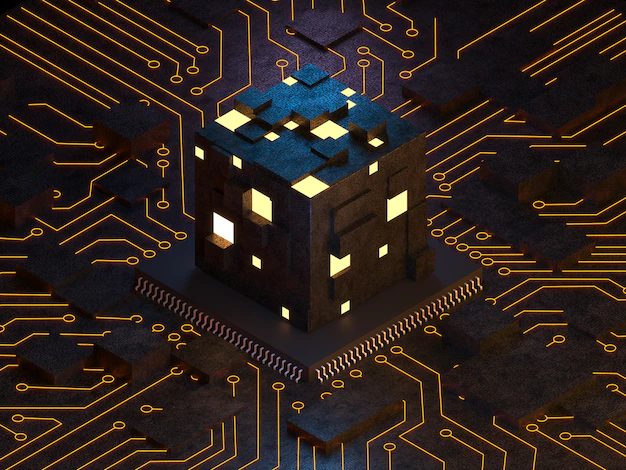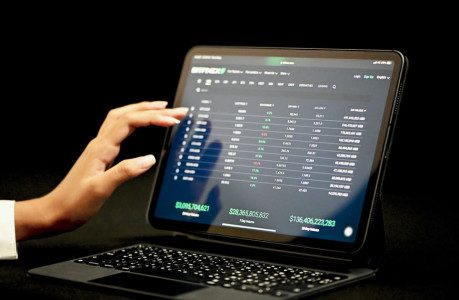Unveiling Web3 Blockchain: A Comprehensive Introduction

The world of blockchain technology has evolved significantly since the inception of Bitcoin in 2009. While Bitcoin was the pioneer, it represented just the tip of the iceberg.
In recent years, a new concept has gained traction, promising to revolutionize not just how we handle digital currencies, but how we interact with the entire internet – Web3 Blockchain.
In this comprehensive guide, we will unravel the intricacies of Web3 Blockchain, exploring its meaning, key components, and transformative potential for the future of the Internet.
Understanding Web3 Blockchain
Web3 Blockchain, often simply referred to as Web3, is a groundbreaking concept that combines blockchain technology with the principles of decentralization, interoperability, and user-centric control to create a new internet paradigm. Unlike Web 2.0, which is characterized by centralized platforms and control, Web3 envisions a decentralized web where individuals have ownership and control over their digital identities and data.
Web3 Blockchain can be viewed as the next phase in the evolution of the internet. It aims to address the shortcomings of the current web, including issues of privacy, data ownership, and control. At its core, Web3 seeks to create a more open, transparent, and user-centric internet experience.
Key Components Of Web3 Blockchain
To understand the essence of Web3 Blockchain, let’s break down its key components:
1. Decentralization
Decentralization is at the heart of Web3. Unlike Web 2.0, where centralized entities such as tech giants and social media platforms control user data and interactions, Web3 promotes a peer-to-peer network where users have direct control over their data and interactions. This decentralized model is made possible through blockchain technology, which eliminates the necessity for including intermediaries.
2. Blockchain Technology
Blockchain technology serves as the foundational framework of Web3. Blockchains are distributed ledgers that record transactions in a transparent, secure, and immutable manner. These ledgers are maintained by a network of nodes, ensuring that no single entity has full control. This technology enables trustless transactions and data integrity, making it a critical component of Web3.
3. Cryptocurrencies and Tokens
Cryptocurrencies and tokens are an integral part of Web3 Blockchain. These digital assets enable various functionalities within decentralized applications (dApps) and smart contracts. Cryptocurrencies like Bitcoin and Ethereum are used as digital currencies, while tokens can represent ownership of digital or physical assets, governance rights, or utility within a specific ecosystem.
4. Smart Contracts
To put it simply, smart contracts refer to self-executing agreements that have the contract terms written directly into code. These contracts automatically execute when predefined conditions are addressed, eliminating any need for intermediaries. Smart contracts play a vital role in enabling decentralized applications and automating various processes in Web3.
5. Interoperability
Interoperability is the ability of different blockchain networks and apps to communicate and interact seamlessly. Web3 envisions a future where various blockchain networks can collaborate, ensuring that users are not confined to a single ecosystem. This interoperability enhances user freedom and choice.
The Promise of Web3 Blockchain
Now that we’ve explored the core concepts of Web3 Blockchain, let’s delve into the transformative potential it holds for various aspects of the internet and beyond.
1. Ownership of Digital Assets
In Web3, users have true ownership of their digital assets. Whether it’s cryptocurrency holdings, digital art, virtual real estate, or in-game items, users have full control and can transfer, trade, or monetize their assets without relying on centralized platforms.
2. Data Privacy and Security
Web3 prioritizes data privacy and security by giving users control over their personal information. Decentralized identity solutions and data storage platforms allow users to share data selectively and securely, reducing the risk of data breaches and unauthorized access.
3. Decentralized Finance or DeFi
Web3 contributed to the overall popularity of the DeFi ecosystem. Here, conventional financial services such as borrowing, trading, and lending are built on blockchain technology. DeFi offers users unprecedented access to financial services without relying on banks or intermediaries.
4. Web3 Applications (dApps)
Decentralized applications or dApps are a core component of Web3. These applications operate on blockchain networks, offering various functionalities such as decentralized social media, marketplaces, and gaming platforms. Users have greater control over their interactions and data within these dApps.
5. Governance and Decision-Making
Web3 introduces new models of governance where token holders have a say in the development and decision-making processes of blockchain networks and dApps. This ensures a more democratic and transparent approach to platform governance.
6. NFTs (Non-Fungible Tokens)
NFTs, often associated with Web3, represent unique digital assets and have gained immense popularity in art, music, gaming, and entertainment. NFTs provide creators with a new way to monetize their digital content and give buyers true ownership of unique digital items.
Challenges and Considerations
While Web3 Blockchain holds immense promise, it is not without its challenges and considerations. Here are some key factors to keep in mind:
1. Scalability
Scalability remains a concern in Web3, especially for blockchain networks like Ethereum. As adoption grows, addressing scalability issues to accommodate a larger user base and higher transaction volumes is essential.
2. User Experience
User experience in Web3 is still evolving and can be complex for non-technical users. Improving the user interface and onboarding processes will be crucial for widespread adoption.
3. Regulatory Environment
The regulatory landscape for cryptocurrencies and Web3 technologies is still uncertain in many jurisdictions. Adhering to evolving regulations while maintaining the principles of decentralization will be a delicate balancing act.
4. Security Challenges
As the Web3 ecosystem expands, new security challenges may arise, including vulnerabilities in smart contracts, wallet security, and decentralized applications. Ongoing security audits and education are necessary to mitigate risks.
Conclusion
Web3 Blockchain represents a paradigm shift in the way we interact with digital assets, especially the Internet. It offers a vision of a decentralized, user-centric, and privacy-focused web where individuals have true ownership and control. While challenges and considerations exist, the transformative potential of Web3 is undeniable.
As the Web3 ecosystem continues evolving, it’s essential for individuals and businesses to stay informed and explore the opportunities and innovations that this new internet era brings. Whether it’s through decentralized finance, ownership of digital assets, or participation in governance, Web3 Blockchain is reshaping the digital landscape and paving the way for a more open and inclusive internet.
Read Also:


























Leave A Reply